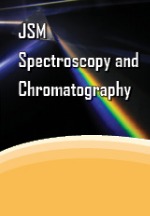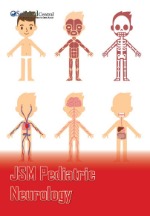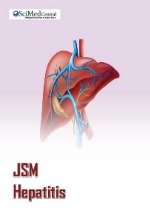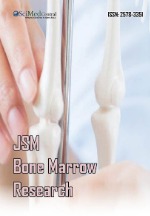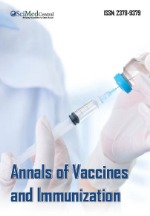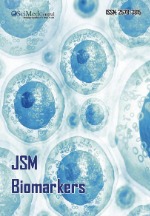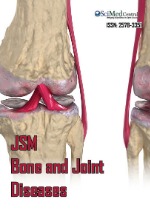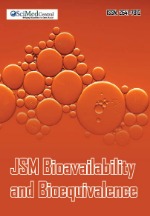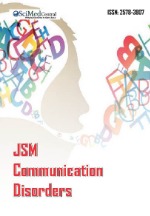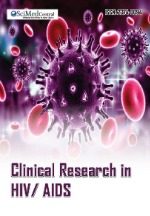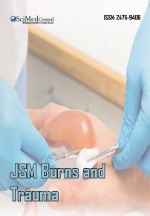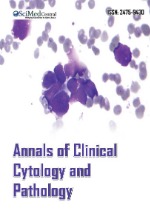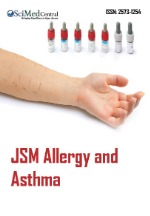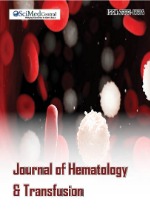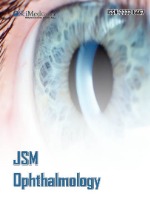The Masks of Syphilis and its Cutaneous Manifestations
- 1. Dermatology Resident, Equinoccial Technological University, Quito, Ecuador
- 2. Dermatology Department, Carlos Andrade Marín Specialties Hospital, Quito, Ecuador
- 3. Department of Dermatopathology, Carlos Andrade Marín Specialties Hospital, Quito, Ecuador
Abstract
Syphilis, caused by Treponema pallidum, is a sexually and vertically transmitted infection exploiting antigenic variation (e.g., TprK proteins) to evade host immunity and persist. Global incidence is rising, especially among men who have sex with men and HIV-infected individuals, where prevalence exceeds 10% and 20%, respectively. Secondary syphilis presents diverse cutaneous and mucosal lesions, earning the moniker “the great imitator.” Accurate diagnosis requires combined serological testing, direct detection methods (e.g., PCR), and histopathology, crucial for identifying atypical presentations and managing immunocompromised patients.
KEYWORDS
- Syphilism; Treponema pallidum; Cutaneous manifestations; Secondary syphilis; Serological testing
CITATION
López L, Erazo G, Posso V (2024) The Masks of Syphilis and its Cutaneous Manifestations. JSM Clin Case Rep 12(4): 1249.
ABBREVIATIONS
WHO: World Health Organization; STI Sexually Transmitted Infection; HIV: Human Immunodeficiency Virus; MSM: Men Who Have Sex with Men; Venereal Disease Research Laboratory; VDRL: RPR: Rapid Plasma Reagin; FTA-ABS: Fluorescent Treponemal Antibody Absorption; TPPA: Treponema pallidum Particle Agglutination; EIA: Enzyme Immunoassay
INTRODUCTION
Syphilis is a chronic systemic infection caused by the spirochete Treponema pallidum subspecies pallidum, which remains a significant global public health challenge. (Centers for Disease Control and Prevention) [1]. Despite advancements in diagnostics and therapeutics, the incidence of syphilis has been rising worldwide, particularly among vulnerable populations [2].
The cutaneous manifestations of syphilis are notoriously diverse, often mimicking a wide range of dermatological conditions, earning it the moniker “the great imitator” [3]. Secondary syphilis, in particular, presents with varied skin and mucosal lesions that can be easily mistaken for other dermatological diseases, complicating timely diagnosis and management [4].
Early and accurate recognition of these cutaneous manifestations is crucial for initiating appropriate treatment and preventing ongoing transmission of the disease. This article aims to comprehensively review the different cutaneous presentations of syphilis, emphasizing the importance of considering syphilis in the differential diagnosis of various dermatoses and providing clinical tools for its identification.
CASE PRESENTATION
A 44-year-old male patient with a history of diagnosed HIV infection and undergoing treatment for five years reports a cutaneous rash following apparent fish consumption. The lesions are accompanied by general malaise, arthralgias, headache, and intense pruritus. On physical examination, dermatosis is localized to the anterior and posterior thorax, upper limbs, palms, and soles, characterized by poorly defined, irregular erythematous-violaceous macules and plaques of various sizes that disappear upon digital pressure. Some lesions exhibit peripheral desquamation (Figures 1A,1B, 2).
Figure 1 A and B: An erythematous maculopapular exanthem is observed on the anterior and posterior thorax, which disappears upon digital pressure.
Figure 2: Hyperpigmented macules and patches with poorly defined borders and slight peripheral desquamation affecting the right palm. Sign suggestive of Biett’s collarette.
The oral and genital mucosae were unaffected. Given the presented history, diagnoses of a viral exanthem or a morbilliform exanthem were considered. Symptomatic treatment was Badministered; however, the lesions persisted, leading to a skin biopsy, which reported an orthokeratotic epidermis with an abundant superficial and deep perivascular infiltrate at 10× magnification (Figure 3).
Figure 3: 10x Orthokeratotic epidermis with abundant superficial and deep perivascular infiltrate.
At 100× magnification using oil immersion, numerous plasma cells, indicated by red arrows, were observed surrounding nerve fibers (Figure 4).
Figure 4: 100x Abundant plasma cells, indicated by the red arrows, surrounding the nerve fibers.
Based on the histopathological findings and a high suspicion of secondary syphilis, an indirect immunofluorescence test was performed, which was positive for Treponema pallidum (Figure 5).
Figure 5: Indirect Immunofluorescence Test: Bright and specific fluorescence observed on the surface of Treponema pallidum spirochetes. Positive for specific antibodies against Treponema pallidum.
Due to the initial reason for consultation being a cutaneous rash accompanied by headache, a cranial Computed Axial Tomography (CT scan) was performed, which was negative for neurosyphilis.
DISCUSSION
Syphilis is a disease transmitted both sexually and vertically from mother to child. It is caused by the spirochete bacterium Treponema pallidum subspecies pallidum, belonging to the order Spirochaetales [5], which possesses mechanisms that allow it to evade the host immune system and disseminate throughout the organism [6]. Among the proteins involved in its pathogenesis are the Treponema repeat proteins (Tpr), especially TprK, which exhibits antigenic variation and facilitates immune evasion [3]. This antigenic variability is crucial for the persistence of the bacterium and the progression of the disease.
The prevalence of syphilis has experienced a significant increase in recent years, representing an important challenge for global public health. According to the World Health Organization (WHO) 2021 report, it is estimated that there are around 7 million new cases of syphilis annually worldwide among individuals aged 15 to 49 years (WHO) [7].
In immunocompetent populations, syphilis rates have increased, especially among men who have sex with men (MSM), where prevalence can exceed 10% in some regions (Centers for Disease Control and Prevention) [1].
In immunocompromised patients, particularly those co- infected with the Human Immunodeficiency Virus (HIV), prevalence is even higher. Recent studies indicate that syphilis co- infection rates in people with HIV can reach up to 20% (Rowley J, et al) [4]. HIV co-infection not only increases prevalence but also alters the clinical presentation of syphilis. Patients with HIV tend to present with more severe and atypical cutaneous manifestations, and the progression of the disease can be more rapid [2].
Furthermore, immunosuppression in HIV patients can affect the serological response to Treponema pallidum, leading to false- negative results or unusual serological patterns, complicating diagnosis [8]. Therefore, it is essential to perform both treponemal and non-treponemal tests in these patients and maintain a high index of clinical suspicion.
Secondary syphilis is renowned for its diverse cutaneous and mucosal manifestations, earning it the epithet “the great imitator” due to its ability to mimic multiple dermatoses [5]. The main clinical presentations include: 1. Macular syphilids (syphilitic roseola): These are erythematous or erythematopigmented macules, non-pruritic, appearing symmetrically on the trunk and proximal extremities. They are usually subtle and may go unnoticed [9]. 2. Papular syphilids: These are firm papules, ranging in color from pink to coppery, which can occur in any body region. Palmoplantar papules are especially characteristic, frequently hyperkeratotic and sometimes fissured, facilitating their distinction from other dermatoses [10]. 3. Papulosquamous syphilid variant: These are papules covered with fine scales, which can coalesce into plaques and mimic psoriasis or seborrheic dermatitis. They can affect the scalp, eyebrows, and facial region [8]. 4. Pustular and nodular syphilids: Less frequent, primarily observed in immunocompromised patients. Pustular lesions may evolve into ulcerations and form meliceric crusts, while nodular lesions can ulcerate and leave residual scars [11].5. Condylomata lata: Verrucous, moist, flattened lesions located in intertriginous areas such as the anogenital, perineal, and perianal regions. They are highly contagious due to the abundant presence of spirochetes on their surface [5]. 6. Mucous patches: Elevated, whitish or grayish areas on oral, pharyngeal, and genital mucosae. They can cause symptoms such as odynophagia, dysphonia, or genital discomfort. These lesions are also highly infectious [9]. 7. Syphilitic alopecia: Diffuse or patchy hair loss, known as “moth-eaten” alopecia or “moth spots.” It can affect the scalp, eyebrows, eyelashes, and body hair [10]. 8. Syphilitic leukoderma (leucoderma colli): Hypopigmented irregular spots, especially in the posterior cervical region, known as the “Venus collar.” It can extend to the trunk and extremities [8]. 9. Ocular and otological lesions: Although less common, uveitis, optic neuritis, and sensorineural deafness may occur, indicating early central nervous system involvement [11].
Our patient was classified in a maculo-papular variant, received 3 doses of benzathine penicillin 2.4 million units, with a favorable response.
Diagnostic methods encompass serological tests, direct detection techniques, and histopathological examinations. Serological tests are the cornerstone in the diagnosis of syphilis and are divided into non-treponemal and treponemal tests. Non- treponemal tests: Include VDRL (Venereal Disease Research Laboratory) and RPR (Rapid Plasma Reagin). These tests detect anticardiolipin antibodies generated by tissue damage and autoimmune reactions. They present a sensitivity of 78-86% in primary syphilis and nearly 100% in secondary syphilis, with a specificity around 98% [8]. However, they may yield false positives in the presence of other conditions such as autoimmune diseases, viral infections, and pregnancy. Treponemal tests: Such as FTA-ABS (Fluorescent Treponemal Antibody Absorption), TPPA (Treponema pallidum Particle Agglutination), and EIA (Enzyme Immunoassay). They detect specific antibodies against Treponema pallidum antigens. They have a sensitivity and specificity exceeding 95% [8]. They remain positive for life, which limits their utility in evaluating treatment response.
Direct detection methods include: 1. Dark-field microscopy: Allows direct visualization of motile spirochetes in exudates from moist lesions. It has high specificity, but its sensitivity is variable and depends on the quality of the sample and the operator’s expertise [9]. 2. Nucleic Acid Amplification Tests (NAATs): PCR is a valuable tool for detecting T. pallidum DNA in clinical samples. Recent studies report a sensitivity of 88-95% and specificity close to 100%, being especially useful in primary lesions and congenital syphilis cases [12].
Skin biopsies reveal certain characteristic findings: in the epidermis, psoriasiform hyperplasia, acanthosis, and parakeratosis. In papular lesions, hyperkeratosis and superficial ulceration are commonly observed. In the dermis, a dense inflammatory infiltrate with perivascular and periadnexial predominance, primarily composed of lymphocytes and abundant plasma cells, which is characteristic of secondary syphilis 13]. In blood vessels, obliterative endarteritis with endothelial proliferation and intimal thickening is observed, contributing to tissue ischemia.
The detection of spirochetes in tissue can be performed using immunohistochemistry techniques with specific antibodies against T. pallidum or silver stains like Warthin-Starry. Immunohistochemistry presents a sensitivity of 70-80% and a specificity close to 100%, facilitating the direct visualization of the pathogen in the tissue [14].
The combination of serological tests with direct detection methods and histopathological findings enhances diagnostic accuracy, especially in atypical presentations or in immunocompromised patients.
ACKNOWLEDGMENTS
We are deeply grateful to the Department of Pathology and Dermatology at Carlos Andrade Marín Specialties Hospital for their contribution to the completion of this remarkable case.
ETHICAL PERMISSION
The patient has given informed consent during his treatment for the publication of this article.
REFERENCES
- Centers for Disease Control and Prevention. Sexually transmitted disease surveillance 2020. Atlanta, U.S. Department of Health and Human Services. 2022.
- Kojima N, Klausner JD. An update on the global epidemiology of syphilis. Curr Epidemiol Rep. 2018; 5: 24-38.
- Lafond RE, Lukehart SA. Biological basis for syphilis. Clin Microbiol Rev. 2020; 33.
- Rowley J, Vander Hoorn S, Korenromp E, Low N, Unemo M, Abu-Raddad LJ, et al. Global and regional estimates of the prevalence and incidence of four curable sexually transmitted infections in 2016. Bull World Health Organ. 2019; 97: 548-562.
- Peeling RW, Mabey D, Kamb ML, Chen X-S, Radolf JD, Benzaken AS. Syphilis. Nat Rev Dis Primers. 2017; 3: 17073.
- Radolf JD, Deka RK, Anand A, Smajs D, Norgard MV, Yang XF. Treponema pallidum, the syphilis spirochete: Making a living as a stealth pathogen. Nat Rev Microbiol. 2016; 14: 744-759.
- World Health Organization. Global progress report on HIV, viral hepatitis and sexually transmitted infections, 2021. WHO. Geneva. 2021.
- Janier M, Unemo M, Dupin N, Tiplica GS, Poto?nik M, Patel R. 2020 European guideline on the management of syphilis. J Eur Acad Dermatol Venereol. 2021; 35: 574-588.
- Workowski KA, Bachmann LH, Chan PA, Johnston CM, Muzny CA, Park I, et al. Sexually Transmitted Infections Treatment Guidelines, 2021. MMWR Recomm Rep. 2021; 70: 1-187.
- Ghanem KG, Ram S, Rice PA. The modern epidemic of syphilis. N Engl J Med. 2020; 382: 845-854.
- Marra CM, Bozzette S, Cartwright CP, Rothman RE, Muganda P, Jacob ST, et al. Clinical manifestations of early syphilis by HIV status and gender: Results of the syphilis and HIV study. Open Forum Infect Dis. 2020; 7.
- Gayet-Ageron A, Lautenschlager S, Ninet B, Perneger TV, Combescure C. Efficiency of PCR in the diagnosis of syphilis: A systematic review and meta-analysis. Open Forum Infect Dis. 2019; 6.
- Hoang MP, High WA, Molberg KH. Secondary syphilis: A histopathological study. J Cutan Pathol. 2020; 47: 24-29.
- Xiao Y, Tong ML, Liu LL, Lin LR, Zhang HL, Gao K, et al. Immunohistochemical staining of Treponema pallidum in paraffin- embedded skin tissues for the diagnosis of secondary syphilis. Am J Dermatopathol. 2019; 41: 89-94.










